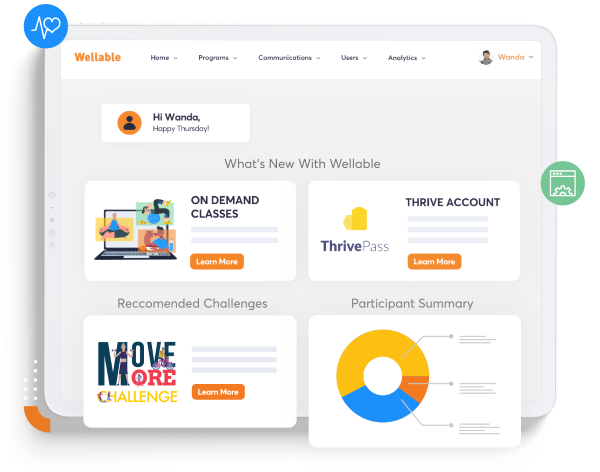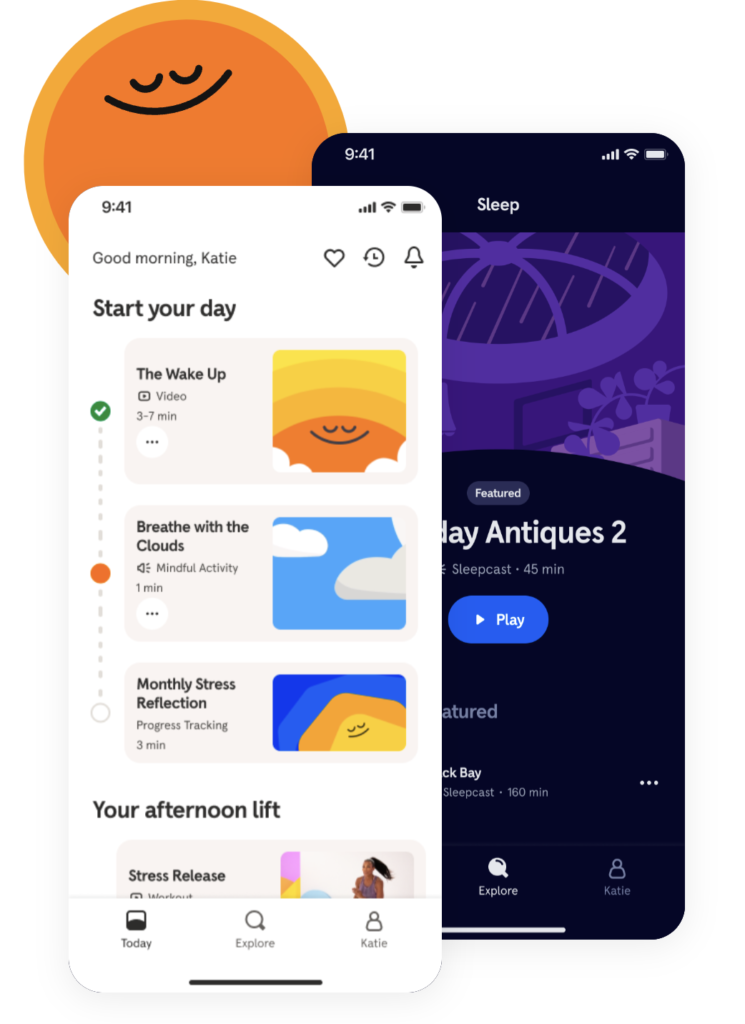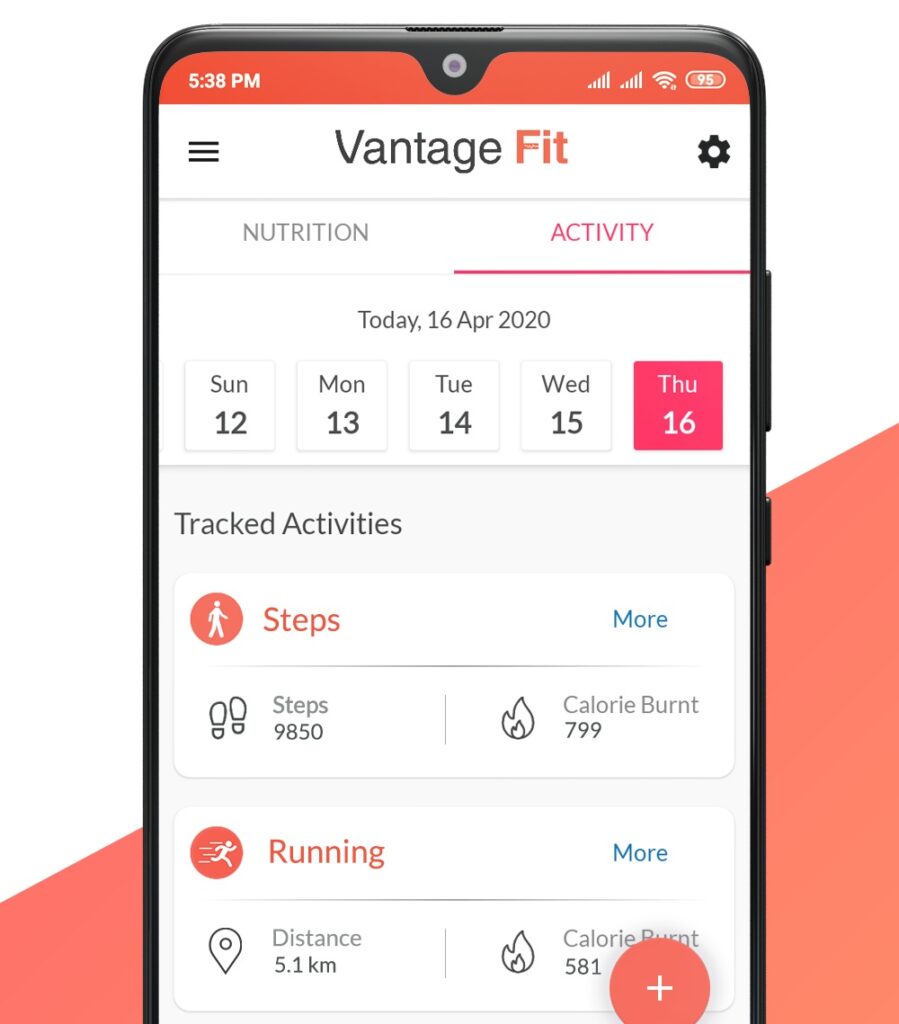Key takeaways
What is an employee wellness program?
Employee wellness programs are initiatives by companies to improve their workers’ physical, mental, financial, and intellectual well-being. Companies may use wellness programs as an employee engagement strategy, like facilitating activities during National Wellness Month in August, or as a part of their employees’ larger benefits package.
Traditional wellness programs, like company-wide weight loss contests, biometric screenings, and dieting, usually focus on improving employees’ physical health. The idea is to promote healthy habits and a more productive workforce through shared challenges that foster company camaraderie and accountability.
However, wellness programs like these often do more harm than good. For example, wellness programs that emphasize weight loss and diet changes can promote harmful stereotypes, like weight stigma. What’s more, they can actually demotivate employees, encourage unrealistic goal setting, and negatively affect employee mental health.
However, if implemented correctly, holistic wellness programs targeting the entire spectrum of well-being can be a positive move for your company. Besides providing diverse options for employees, they are more inclusive since they help employees wherever they are in their wellness journeys.
For example, Mark McShane, Managing Director of AED Training, found that offering a variety of wellness activities that addressed different needs and interests increased employee satisfaction by 15%.
The most common holistic wellness programs include initiatives from the following dimensions of human well-being:
- Physical.
- Mental and emotional.
- Financial.
- Intellectual.
You may consider offering wellness programs that also cover the social, occupational, and environmental aspects of well-being for a more well-rounded approach.
Benefits of employee wellness programs
Wellness programs provide major benefits for your business and workforce alike. Some of the main ones include:
- Improves work-life balance or integration.
- Attracts top talent.
- Retains talent longer.
- Strengthens company culture.
- Increases productivity.
- Decreases health risks.
Improves work-life balance or integration
Wellness programs make it easier to balance work and life responsibilities. For example, financial planning and counseling programs can lower employees’ stress related to personal financial or emotional insecurity, which may indirectly impact work performance. By managing these stressors, employees can better reinforce work-life boundaries for more focused work.
Alternatively, wellness programs can make it easier to integrate work and life. For instance, onsite fitness centers, nap pods, and meditation rooms give employees the flexibility to leave work to pursue personal wellness goals and return to work as needed.
The point is that wellness programs allow employees to craft lifestyles that work for them, especially in an increasingly remote-friendly world.
Attracts top talent
According to Transamerica Institute’s 2023 Stepping Into the Future study, 70% of employees find offering workplace wellness programs important, but only 34% of employers do. In a highly competitive job market, including wellness programs as part of your total rewards package can help your recruiters market your positions to the best talent.
Retains talent longer
Employees with access to wellness programs meaningful to them are more inclined to stay with your company long-term. This is because wellness programs lead to more engaged and satisfied employees when you provide ways for them to meet their physical, psychological, emotional, social, and intellectual needs. And with an engaged workforce, retention increases since there is less incentive for workers to leave.
Strengthens company culture
Your wellness programs can reinforce your company’s values and culture. For example, company-wide wellness events, like community volunteering and meditation, can foster teamwork and positive working relationships. You can even use your diverse wellness offerings to showcase your support for the diverse and nuanced employee experience, making employees from various walks of life feel heard and seen in the workplace.
Increases productivity
With wellness programs that address all areas of employee health and happiness, employees are more likely to produce their best work. Some also argue that wellness programs reduce employee absenteeism since they tend to be healthier. While certainly a factor, it is much more complex than this. In reality, wellness programs provide employees the tools to recognize and address their needs to adapt, prioritize, and focus better on the work that positively impacts the company’s bottom line.
Decreases health risks
Wellness programs that target the various dimensions of employee well-being are more likely to decrease health risks in those areas. For example, tobacco cessation programs lower employees’ risk of cancer, counseling reduces the likelihood of a mental health crisis, and employee resource groups (ERGs) decrease feelings of social isolation and marginalization.
While decreased health risks for your employees can certainly increase your company’s productivity and profitability, as well as lower employee healthcare costs, it also empowers your employees to live happy and more fulfilled lives.
Examples of wellness programs


Physical wellness programs
Physical wellness programs target the healthy function of bodily systems, like musculoskeletal, cardiovascular, and digestive, plus regulate sleep cycles.
Health reimbursements and stipends
Reimbursements or stipends for various physical health activities are popular employee wellness programs. They could include reimbursing employees for gym memberships, fitness classes, or personal trainers. You may also consider reimbursements and stipends for less traditional health options, like reiki, massage, yoga, pilates, and acupuncture sessions or courses.
One drawback of these wellness programs is that they can be expensive for smaller companies. For example, according to Compt’s 2024 Lifestyle Benefits Benchmarking Report, reimbursement claim amounts for health and wellness can cost between $79 and $109. If this is too expensive, try looking for healthcare plans with some of these options included, such as gym discounts.
Fitness and nutrition resources
Fitness and nutrition resources include a range of options, including the following:
- 100% employer-paid onsite or virtual fitness or nutrition classes.
- Free vaccinations.
- Nutrition counseling.
- Tobacco cessation groups.
- Onsite healthy snacks.
- Partnering with local food vendors for more diverse food options.
- Health applications.
Resources like the above can be less expensive than reimbursements. This is because you only pay for one group class at a time rather than multiple employee reimbursement claims.
However, these may disadvantage remote employees since they don’t have access to the same perks. Mobile health applications like Personify Health (formerly Virgin Pulse and HealthComp) and Wellable can democratize fitness and nutrition resources for your workforce. For example, these applications can offer personalized fitness tracking, coaching, and better navigation of healthcare benefits.
Whatever you decide to offer, remember to make these resources optional, not prescriptive. You may not be aware of individual employees’ physical and food journeys, so forcing company-wide fitness class attendance and eating health campaigns can negatively impact employee morale and their physical and mental health.
Plus, you could violate the Americans with Disabilities Act (ADA) and Title VII of the Civil Rights Act by forcing particular protected groups to participate, such as those with:
- Personal, cultural, regional, or religious objections.
- Allergy or dietary restrictions.

Mental wellness programs
Mental wellness programs focus on employees’ emotional and psychological health. Initiatives revolve around employees’ ability to cope with stress, manage work and life, express and read others’ emotions, maintain relationships, and contribute to society.
Counseling
Luckily, most modern employee healthcare plans include support for counseling and other forms of psychotherapy. If they don’t, you should invest in counseling services as part of your employees’ total rewards packages. This may include onsite individual or group counseling sessions or reimbursement for therapy sessions to make them more affordable for your employees.
Despite significant strides, seeking help for mental or emotional problems is still uncomfortable for many. Employees’ backgrounds, such as gender, age, culture, religion, or ethnicity, can also affect their receptiveness to counseling.
Offering some of these services onsite or virtually can remove barriers for employees hesitant to seek help during off-work hours. However, remember your responsibility as an employer to HIPAA confidentiality should you decide to facilitate any of these sessions onsite or virtually.
Mindfulness breaks
Company-wide short breaks for mindfulness sessions, like guided meditation and breathing exercises, can give employees’ minds a short rest from the day-to-day. You may also consider creating mindfulness or quiet rooms onsite to facilitate these breaks. Besides helping with employees’ mental health, they also provide inclusive and sensory-friendly spaces for neurodivergent workers.
Studies prove the positive effects intermittent mindfulness breaks can have on humans. For example, several studies published by the National Library of Medicine indicate that mindfulness breaks reduce stress, anxiety, and emotional reactivity.
McShane notes the impact of offering mindfulness sessions and other mental health resources, like counseling and stress management workshops, on his employees. “In two years, we saw a 20% stress-reporting reduction from employees,” he says. Combined with participating in other wellness program initiatives in the company, McShane says team collaboration also improved since less stressed employees tend to work better together.
Mental health and mindfulness applications
Similar to physical fitness wellness applications, there are several applications available to assist employees on their mental health journeys. Depending on your employee demographic, you can give them access to mobile applications to manage stress, regulate meditation and sleep schedules, or provide employee assistance program (EAP) resources.
For example, TechnologyAdvice reimburses us for our annual subscription to Headspace. Through the application, we can access guided meditation lessons and other courses to help with stress, anxiety, and sleep management. Headspace and other applications, like Calm, also provide business subscriptions that give employees access to their app and mindfulness classes.These apps can be a great way to give employees the tools to personalize their mental health journeys without worrying about cost. It also allows employees to manage their emotions and burnout privately.

Financial wellness programs
Financial wellness programs involve initiatives to help employees manage their income, expenses, and debts effectively.
On-demand pay
On-demand pay, also known as earned wage access (EWA), gives employees access to their money as soon as they earn it rather than waiting for the next payday. If you are a large enough company, you may have the HR staff to make on-demand pay a regular pay schedule for your company. Alternatively, you can give employees access to EWA through payroll software providers like ADP.
On-demand pay can be a lifesaver for employees facing financial insecurity, hardship, or unexpected expenses. Because employees have already earned the money, it is much easier to access than alternative (and often predatory) sources like payday loans. Moreover, offering this benefit costs little to nothing since the software automatically reconciles the amounts due to employees on their next regularly scheduled payday.
Financial counseling and planning
Financial counseling and planning give employees the opportunity to speak with expert advisors about their financial situation. These sessions allow employees to plan ahead for future large expenses, such as purchasing a house, retirement, education, and college tuition for their children. The services can also assist employees in making the most of their company-sponsored 401(k) and pension or non-retirement investments.Offering on-demand financial planning services can come at a steep price per employee. Luckily, your 401(k) plan administrators typically provide your employees with free financial counseling services, courses, and seminars. Alternatively, your payroll providers may also have services you can leverage. Paycor, for example, connects employees with financial advisors plus offers on-demand financial learning courses directly from its mobile HR application.


Intellectual wellness programs
Intellectual wellness programs focus on providing fulfillment and enrichment to employees through educational, cultural, and community participation endeavors.
Tuition reimbursements
Tuition reimbursements help employees pay for higher education goals by lowering the cost of their overall education expenses. You may offer this benefit to any employee interested in achieving a degree in a field of their choice, or you may add particular eligibility requirements.
For example, you could make tuition coverage based on the employee’s grade point average, the courses they take, or both. While this is one strategy to ensure your education investment goes far, especially if they take courses related to their role or field, be sure first to have a conversation with the employee about expectations. Sometimes, allowing employees to pursue their personal intellectual interests can reap benefits for you, like innovative ideas to address current company pain points.
Company library
A company library is a low-cost way to foster personal and professional development. The library itself can function much like a real one, with employees checking out books for a limited time and returning them before the end of that period.
You may also consider making your library digital by offering book summaries on your learning management system (LMS) or purchasing a subscription to services like OverDrive and BookFusion. This can help democratize your remote employees’ access to your library and make it easier for them to see content in their preferred format.
Your company library can offer books on various topics, from technical skills training to self-help and popular fiction. The goal should be to satisfy employees’ intellectual curiosities and keep them energized and motivated in their work.
Did you know?
An LMS can help facilitate further intellectual wellness initiatives for your employees. Besides offering courses related to the technical aspects of a role, you can also offer classes for employees to take on their own time to develop their soft skills, including leadership, teamwork, and time management. It can even help employees complete their development plans.
According to SHRM and TalentLMS’s 2022 Workplace Learning and Development Trends study, 76% of employees are likelier to stay with an employer that offers continuous training opportunities. If you’re curious about how to start company training programs, check out some of our resources below:
How to implement an employee wellness program
Implementing an employee wellness program is a collaborative effort between employees, HR teams, and executives. It starts with researching what will be the most beneficial for your employee demographic before budgeting and execution.
1. Evaluate the needs of your employees
Employees should be the driving force behind your wellness programs, not you. While you may want to use Wellness Month to raise awareness of the various dimensions of human well-being or sponsor a company wellness challenge, your workers should decide on your wellness initiatives.
The best way to determine what your employees want is to ask. A company-wide benefits and wellness survey can be your research starting point. Many employee engagement platforms facilitate this, allowing you to ask specific questions about wellness program interests. Culture Amp, for example, offers employee well-being and benefits survey templates to start the process.

2. Designate a wellness committee
Consider appointing a wellness committee once you have a few wellness program ideas of interest. The committee’s sole duty will be to research, evaluate, budget, implement, and advocate for the new wellness program. Ensure you have a committee of employees from various departments, roles, levels, and backgrounds for fairness and inclusivity.
If you lack the funds, time, or resources to fund a wellness committee, consider having your HR team work alongside existing employee groups. For example, working with your DEI committee or employee resource groups (ERGs) allows you to vet potential wellness programs before implementation to ensure they don’t negatively affect particular employee demographics.
Christine Stewart, former CHRO at EagleView, notes the company’s Well Being ERG’s success in creative wellness initiatives and participation: Through the ERG, they’ve been able to organize steps challenges, participate in United Way Day of Caring, and plan Earth Day activities.
Did you know?
Because of differing labor laws, your wellness programs may take different forms depending on where your employees live. You’ll also need to consider the cultural context of some wellness initiatives. For example, U.S. employees may like onsite yoga classes. In contrast, your employees outside the U.S. may object to this wellness program since it removes the religious and spiritual nature of yoga’s origins in Hindu and Buddhist cultures.For more ideas on global benefits, check out An Employer Guide to Global Employee Benefits.
3. Provide diverse options
You should provide a variety of wellness programs to your employees, not just the initiative that generated the most interest in your employee survey. Most likely, the definition of wellness differs from employee to employee, so you’ll want a few options to make everyone feel included.
For example, some employees may prefer gym membership reimbursements, while others may enjoy in-person company classes for accountability. Still, others may dislike or avoid these classes for personal reasons, instead hoping for access to company development courses. The point is that wellness differs for everyone, so more options mean more chances for employee participation.
4. Develop a budget
You’ll need to develop a budget for your wellness programs. Costs can vary widely between programs, so you’ll need a way to compare various vendors. Most accounting software includes budget plans, but a simple spreadsheet program can work just as well. You’ll need to measure programs against competitors in the space alongside your overall business expenses.
Pro tip
If you already invest in payroll, benefits administration, or comprehensive HR software suites, contact your vendor to see what wellness programs they offer. Some come with free financial wellness tools, while others include professional development courses employees can access in their free time.
Sticking with your current vendors can be a cost-saving measure and speed up employees’ access to these resources.
5. Align with your company values
Consider choosing wellness programs that align with your company’s core values. This is a great way to demonstrate commitment to your values instead of appearing performative. Plus, if you need help narrowing down your wellness offerings, you can use exemplifying a core value as a determining factor.
For example, one of our core values at TechnologyAdvice is to “crave knowledge.” To that end, we receive reimbursements for any personal or professional development books we purchase as long as we share key takeaways from the read with our manager.
6. Promote awareness
Be sure that your employees are aware of the wellness programs once you’ve put them in place. This can take several different forms:
- A wellness policy outlining different program eligibility rules and benefit perks.
- Updated job descriptions highlighting these programs to applicants.
- Explanations during onboarding to notify incoming employees of their wellness options.
- Periodic company announcements to remind employees of what’s available to them.
The more often you inform employees about your wellness programs, the more likely they are to use and benefit from them.
7. Track return on investment
After implementing your wellness programs, monitor usage or adoption rates to begin tracking return on investment (ROI). You’ll also want to monitor your turnover, attrition, and recruitment metrics to understand how adding your wellness programs affects employee retention and attraction. You may even monitor how wellness program usage rates line up with company revenue for insight into their impact on productivity.
But most importantly, solicit feedback from employees regularly through follow-up surveys. This will allow you to understand where your wellness programs do well and fall short so you can take measures to address concerns. After all, your wellness programs are for your employees, so you should look to them to understand sentiment and your programs’ effectiveness.










